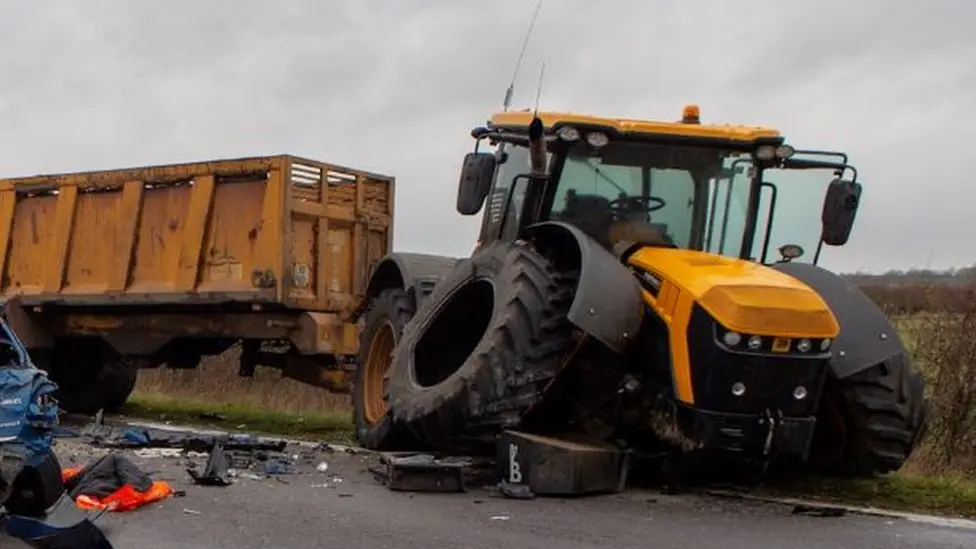
The Royal Sundaram Alliance Insurance Company Limited vs. Smt. Honnamma & Ors. (2025 INSC 625):
Background & Parties
• Appellant: Royal Sundaram Alliance Insurance Co. Ltd.
• Respondents: Legal heirs of the deceased (Honnamma, her daughters), the tractor owner (Nagaraj), and the driver (Respondent No. 5)
An unfortunate accident occurred on February 29, 2012 when the tractor—and its uninsured trailer—overturned, killing a labourer unloading soil. The tractor was insured with Royal Sundaram; the trailer was not.
Procedural History
• MACT awarded ₹9,50,000 (plus 6% interest) to the legal heirs but held the insurer not liable, on the ground that neither the trailer nor the labourer was insured.
• High Court of Karnataka increased compensation to ₹13,28,940 and held Royal Sundaram liable.
• Royal Sundaram appealed to the Supreme Court, arguing (1) the trailer and labourer weren’t covered under the policy, (2) the High Court misapplied Sarla Verma v. DTC (2009), and (3) insurer liability should be capped by the policy or statutory limits.
Key Findings of the Supreme Court
- Root Cause Principle & Statutory Liability
The Court asserted the tractor’s negligent driving was the proximate and operative cause of the accident. Since the tractor was insured, this triggered coverage under Section 147 MV Act. Prior rulings requiring separate trailer insurance were distinguished as facts‑specific. The Court emphasised the MV Act’s benevolent, welfare-oriented purpose. - Limits of Liability & Pay‑and‑Recover Doctrine
While policy‑holder liability is capped at statutory minimum or contractual limits (whichever is higher), the Court ordered Royal Sundaram to initially satisfy the full award of ₹13,28,940, with a two‑month timeline for payment. The insurer is granted the right to recover any excess payout from the tractor owner. - Quantum of Compensation
The Supreme Court upheld the High Court’s enhanced award, observing that evidence supported higher dependency-based compensation within the Sarla Verma framework and that exceeding the original claim amount is permissible under relevant provisions of the Motor Vehicles Act. - Precedents Distinguished and Applied
• The decision in Dhondubai v. Gandigude (2023) was distinguished: unlike that case, where the trailer caused the accident independently, here the tractor drove the fatal sequence.
• New India Assurance Co. v. C M Jaya (2002) reaffirmed that insurer liability must align with contractual or statutory caps unless the insurer collected higher premium to extend coverage.
• Welfare-centred precedents such as Ningamma, K. Ramya, and Shivaleela were cited to support a purposive interpretation favoring victims.
Practical Impact & Implications
1. For Claimants: This judgment allows legal heirs to claim from an insurer even where only the tractor—not the trailer—is insured, as long as causal nexus is established.
2. For Insurers: They must honor compensation where an insured vehicle sets events in motion, but may recover any payments beyond policy limits from the policyholder.
3. For Courts & Litigants: Reinforces the “root‑cause” doctrine in composite accidents and provides clarity on the pay‑and‑recover mechanism.
4. For Regulators & Industry: Insurers and motor insurance regulators (IRDAI) may need to revisit premium structure and policy design for tractor‑trailer combinations.
Conclusion
The Supreme Court’s decision in Royal Sundaram v. Honnamma (2025) establishes a robust precedent: when an insured tractor is the moving force behind an accident—even involving an uninsured trailer—insurer liability is triggered so long as causation is proved. The judgment strikes a balanced chord: ensuring timely compensation to victims, while preserving insurers’ contractual rights via recovery mechanisms. It underscores jurisprudence where social justice and statutory mandates meet practical necessity.
Author: Ankit Kumar Bhardwaj
